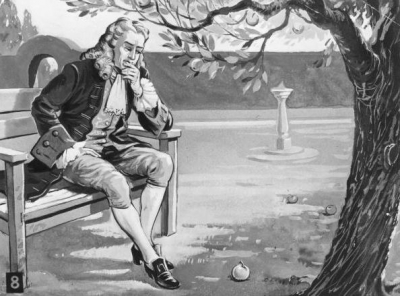
When the Apple fell on Newton or when Archimedes took a bath, history as we know it changed. Those are the ‘Aha’ moments when scientific discoveries were made. A look at some of these breakthrough moments.
Archimedes’ principle – Archimedes
This was history’s first-ever ‘Eureka’ moment. The story of how the Greek mathematician Archimedes discovered the principle of buoyancy is a tale worth recounting. It was whilst taking a bath in a tub that the idea hit Archimedes. When Archimedes noticed the amount of water being displaced from the tub as soon as he entered it, he reasoned that the volume of the water displaced is equal to the volume of the body that was submerged. He is said to have run across the streets naked, shrieking “Eureka” at his discovery of the law of buoyancy. And that gave us the Archimedes’ principle.
Periodic Table – Dmitri Mendeleev
For Russian chemist Dmitri Mendeleev, it all happened in a dream. The Periodic Table of Elements as we know it was conceptualised in a dream. For months, he was trying to arrive at a logical way to organise the chemical elements. Although he knew the atomic weight was a crucial element, he couldn’t find a way to arrange it. One day, after racking his brain over the arrangement pattern, he fell asleep. And lo, the periodic table was born. The idea for the logical arrangement of the elements dawned on him during his dream. He later wrote “In a dream, I saw a table where all the elements fell into place as required.”
Law of Gravity – Isaac Newton
Every child grew up listening to the tale of how an apple’s fall changed science. It was when Isaac Newton noticed the apple fall that he first got the idea of gravity. He wondered what force attracted everything towards the Earth. The tree that inspired the idea of gravity in Newton still stands in the garden of Newton’s old home.
Penicillin – Dr. Alexander Fleming
The discovery of penicillin, the world’s first antibiotic, revolutionised the course of medicine. Dr. Alexander Fleming had just returned from a holiday and found mould growing on a petri dish of Staphylococcus bacteria. The green mould Penicillium notatum prevented the bacteria around it from growing. He isolated the mould, and understood it produced a substance that could kill the bacteria. He named the active agent penicillin and thus the world’s first antibiotic was discovered.
First synthetic dye – William Perkin
The fashion industry must thank William Perkin for his discovery of the first synthetic dye. He was trying to find a cure for malaria, but he accidentally invented the first synthetic purple dye. Perkin was assisting German chemist August Wilhelm von Hofmann in the process of using coal tar to produce quinine which was an expensive anti-malarial drug. As he mixed different coal tar components with potassium dichromate and sulphuric acid, Perkin produced a purple sludge. The rest is history.
DID YOU KNOW? Newton recounted the story that inspired his theory of gravitation to scholar William Stukeley. It appeared in Stukeley’s 1752 biography, “Memoirs of Sir Isaac Newton’s Life.” The UK’s Royal Society converted the fragile manuscript into an electronic book in 2010 and made it accessible online to the public.
Picture Credit : Google




